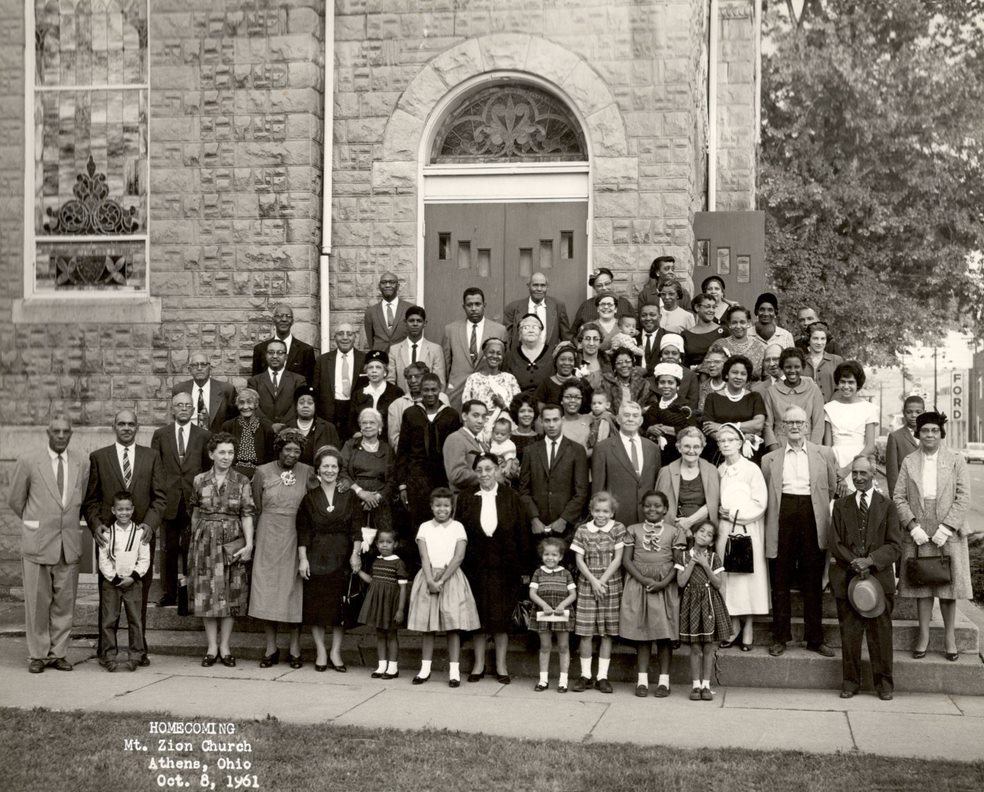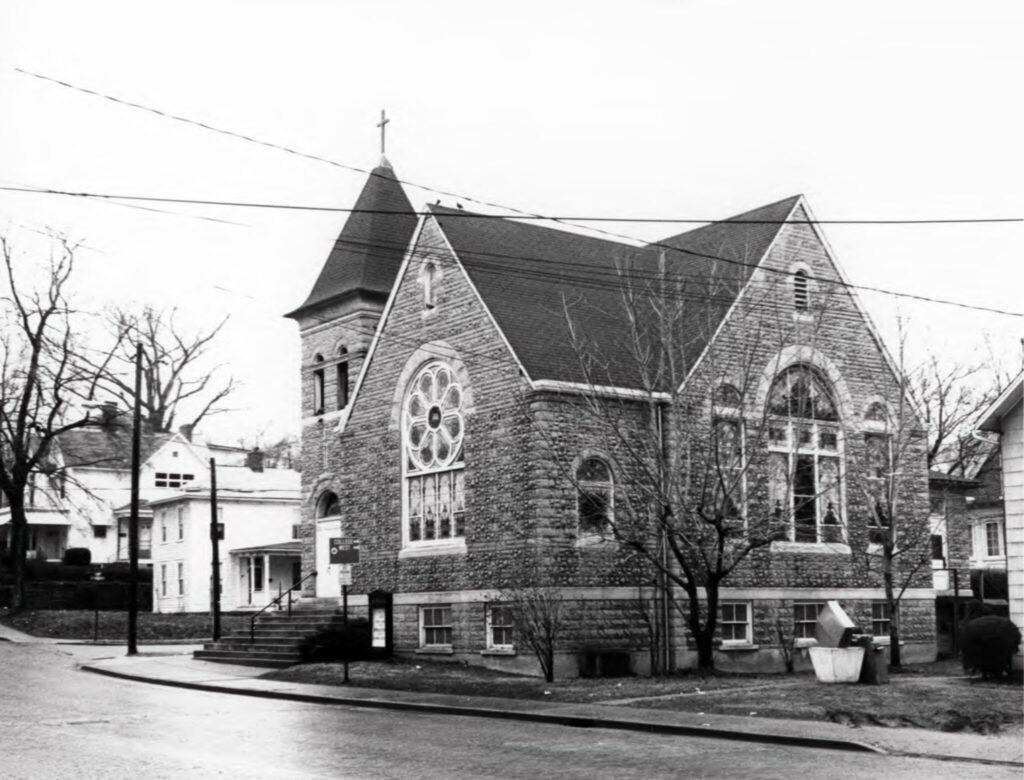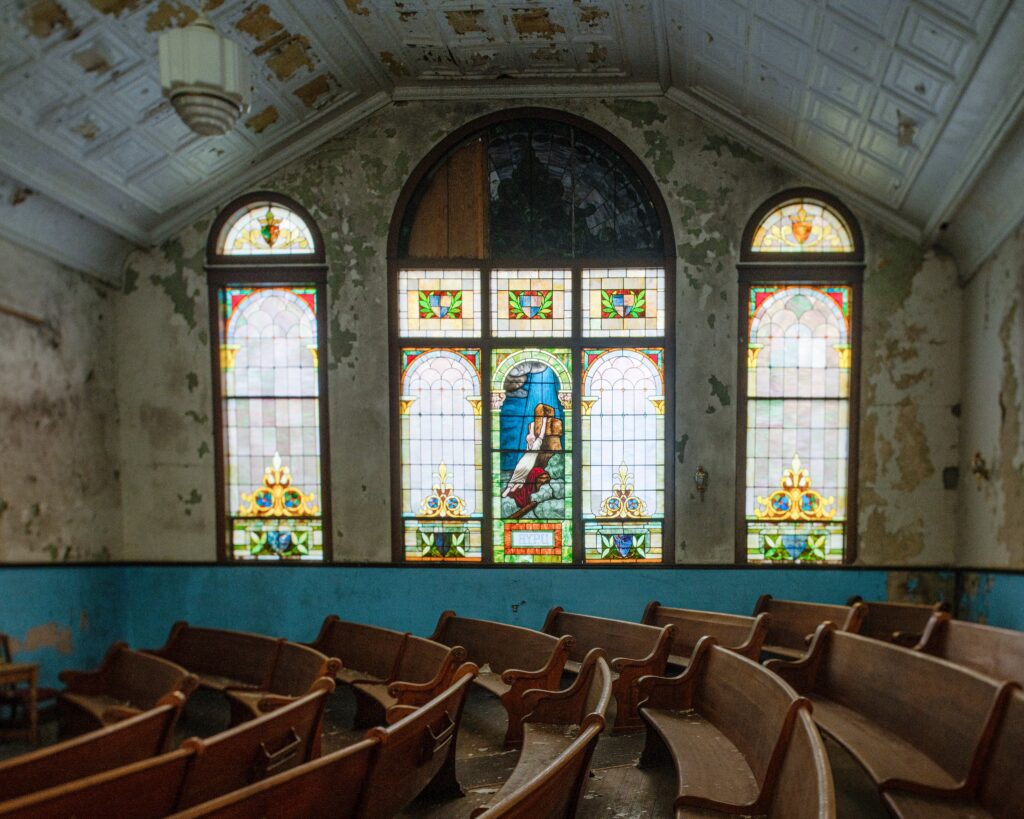For nearly a century after its construction in 1905, Mount Zion Baptist Church stood as a pillar in the Black Appalachian community of Athens, Ohio. Now, a dedicated group of activists and historical preservation enthusiasts are helping breathe new life into the church as a Black community center.
Old buildings are more than bricks and mortar—they’re repositories of memory for their communities. In the case of Mount Zion, located at 32 W. Carpenter St., the church was the center of Black life in Athens, serving as safe space for its congregation. (The churchmembers pre-date the building. The congregation began meeting in homes in 1872 but didn’t get a building until 1905.) That’s why, despite religious services halting in the 1990s, volunteers with the Mount Zion Baptist Church Preservation Society are more dedicated than ever to restoring the building so it can once again fulfill its intended purpose of being a gathering place for the area’s Black residents as the Mount Zion Black Cultural Center.

This movement is especially important given the prevailing narrative that people of color live in cities, not rural areas. This couldn’t be further from the truth. Being in the southeast portion of the state, Athens and surrounding Ohio communities served as stops along the Underground Railroad—a refuge for Black people escaping nearby West Virginia and Kentucky, which practiced enslavement. As such, Athens and the surrounding area became home to Black people from various places all fleeing north.
A robust, thriving community sprang up around them, including Black businesses like Albany Enterprise Academy, a school established in 1864, and the Berry Hotel, established in 1892. Unfortunately, these other institutions are gone and their buildings no longer stand, which makes preserving Mount Zion all the more imperative. It’s one of the last vestiges of local historic Black life.
With National Historical Landmark registration already in place, the Preservation Society’s current focus is on fundraising to remove and repair the church’s stained-glass windows, which bathe the sanctuary in diluted rainbows on sunny days. Due to age and the constant barrage of weather, “the windows are so old that the material holding them together moves like a rubber band, making the window prone to collapsing,” Dr. Tee Ford-Ahmed, the Preservation Society’s communications and media director told The Athens Messenger. The windows are currently covered with a hard clear plastic exterior to preserve them, but in order to preserve and repair the windows, they must first be removed entirely. This also allows other work to be done on the church without the worry that the windows might be further damaged in the process.
While efforts are made possible through volunteers, the group has gotten creative with campaigns to raise money. Previously, the preservationists partnered with Passion Works Studio (a nonprofit arts collective in Athens where people with developmental differences create sustainable, up-cycled works of art) to make yard signs proclaiming “Good Trouble,” the famous John Lewis quote.
The vision is that The Black Cultural Center will serve as “an artistic, cultural, and economic hub within the community and a vibrant gathering space that will endure for centuries to come.”




More recently, the Preservation Society has been selling the church’s wood-carved pews. Ranging from five to eleven feet in length, the heavy, slightly curved pews are solidly built in the way that furniture today so often is not. For a suggested donation of $300, Mount Zion’s pews are making their way into homes throughout the region and making room for more varied, moveable seating in the church itself.
The Preservation Society has been working with the Citizens’ Institute on Rural Design (CIRD), a program of the National Endowment for the Arts that focuses on creative placemaking in communities of fewer than 50,000 people, to bring their vision for the church to life. That vision is The Black Cultural Center serving as “an artistic, cultural, and economic hub within the community and [becoming] a vibrant gathering space that will endure for centuries to come.” There is a need in Athens for Black people to have places to feel safe, welcome, and feel like the space is oriented with them in mind.
As the Preservation Society prepares to launch its Capital Campaign in the coming weeks, expect more creative fundraising efforts and fun events for a good cause. In the past, the group has hosted historic walking tours, talks by activists and academics, film screenings, and more. Likewise, there are many ways to get involved as a volunteer from assisting with grant writing and marketing to cutting the grass to cataloguing the vast collection of artifacts relating to Mount Zion.
